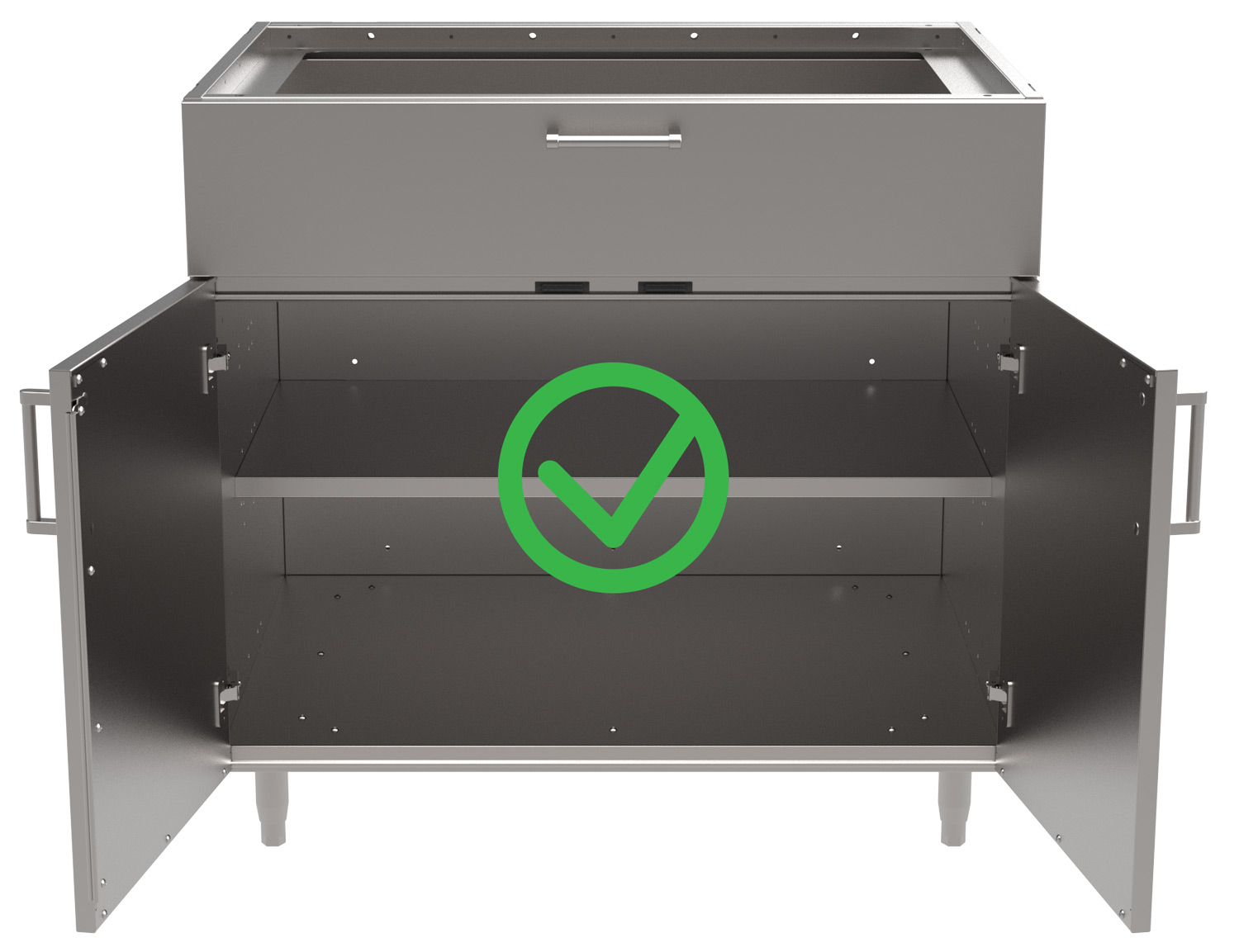Cleaning
General cleaning is important to remove dirt, grease, and fingerprints that can dull the surface over time. Regular upkeep keeps your stainless steel looking shiny and prevents buildup that could lead to stains.
✓ Wipe Down Surfaces Regularly
Use a soft, damp microfiber cloth to wipe away fingerprints, water spots, and smudges.
✓ Mild Soap and Warm Water
A mixture of mild dish soap and warm water is ideal for removing everyday dirt and grime. Avoid abrasive cleaners that may scratch the surface.
✓ Dry Immediately
To prevent water spots, always dry the surface with a clean, soft cloth after cleaning.
Dealing with Stains and Streaks
Stainless steel can stain naturally from things like hard water leaving mineral deposits or exposure to salty air in coastal areas. These environmental factors can cause discoloration over time, even with its protective layer.
✓ White Vinegar Solution
For stubborn streaks or stains, dilute white vinegar with water (1:1 ratio) and gently clean the area. Follow up with a rinse of plain water and dry thoroughly.
✓ Glass Cleaner for Fingerprints
For excessive fingerprints, spray glass cleaner onto a microfiber cloth. Gently wipe down the cabinet, rinse with water, and dry with a towel.
✓ Baking Soda Paste
For tougher spots like grease, mix baking soda with a bit of water to form a paste. Apply gently with a soft cloth, then rinse and dry.
✓ Bar Keepers Friend Cleanser and Soft Cleanser
Made for stainless steel both bar keepers friend cleanser and soft cleanser are approved non-abrasive cleaners for 304 and 316L stainless steel only.
Avoid Harsh Chemicals
While stainless steel is highly resistant to corrosion, certain chemicals can damage its finish:
⊗ Chlorine and Bleach
These can cause pitting and discoloration.
⊗ Abrasive Pads
Steel wool and scouring pads can scratch the surface and compromise its protective layer.
Preventing Rust and Corrosion
Even though 304 and 316L stainless steel are corrosion-resistant, proper care minimizes the risk of surface rust:
Clean Off Salt or Chemicals Promptly
For outdoor applications, especially near coastal areas, rinse off salt or other corrosive residues regularly.
Avoid Prolonged Water Exposure
Standing water can leave marks or lead to discoloration over time. Wipe up spills immediately.
Additional Tips for Long-Lasting Performance
Use Cutting Boards
Avoid cutting directly on stainless steel countertops to prevent scratches.
Protect from High Heat
While stainless steel can handle high temperatures, prolonged exposure to direct heat can discolor the surface. Use trivets or heat-resistant mats.
Inspect Regularly
Periodically check for signs of wear, scratches, or potential rust spots and address them promptly.
We pride ourselves on providing high-quality 304 and 316L stainless steel cabinets and countertops designed to stand the test of time. By following these care tips, you can ensure that your investment remains as stunning and functional as the day it was installed.
If you would like to learn more about the composition of our stainless steel and why the differences matter, you might also like:
304 Stainless Steel Composition
316L Stainless Steel Composition
Sources:


